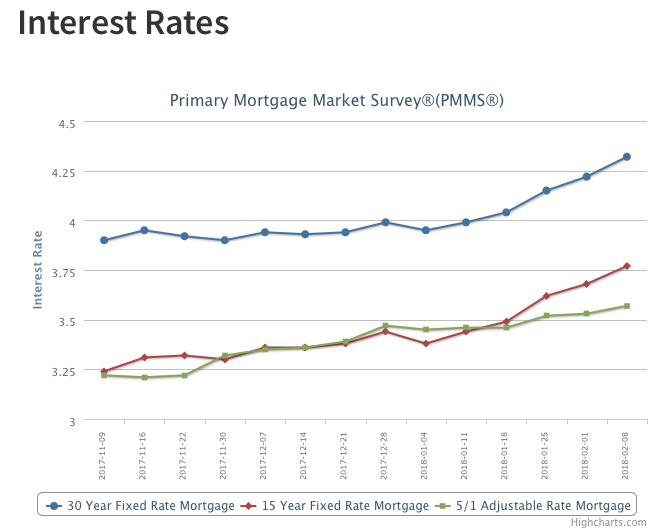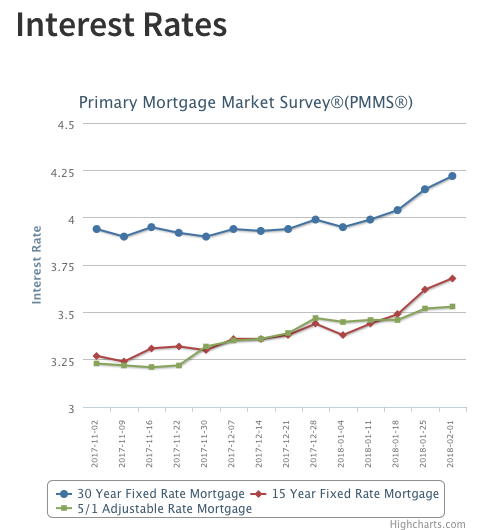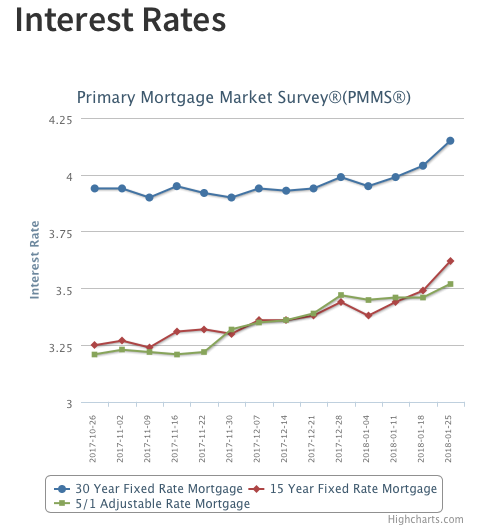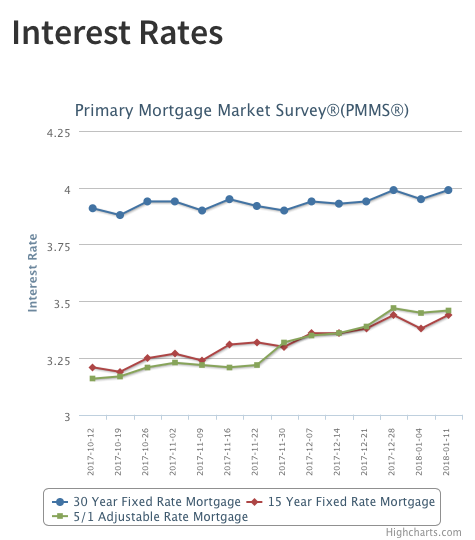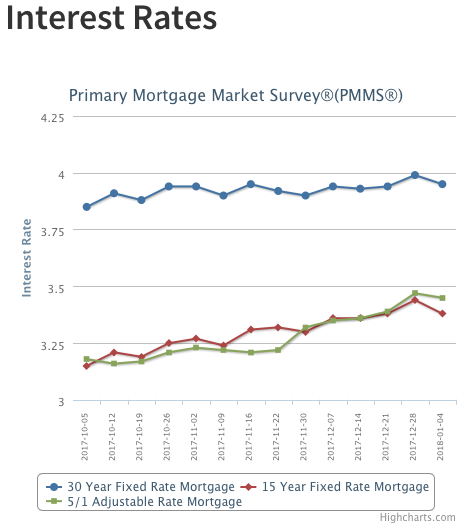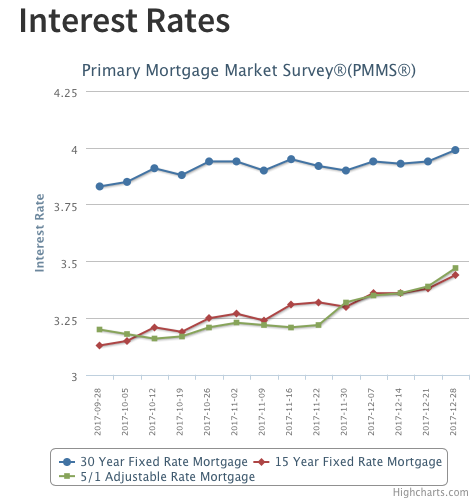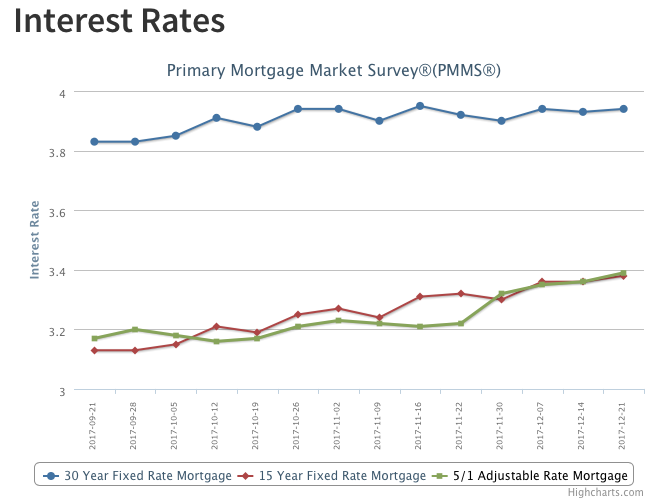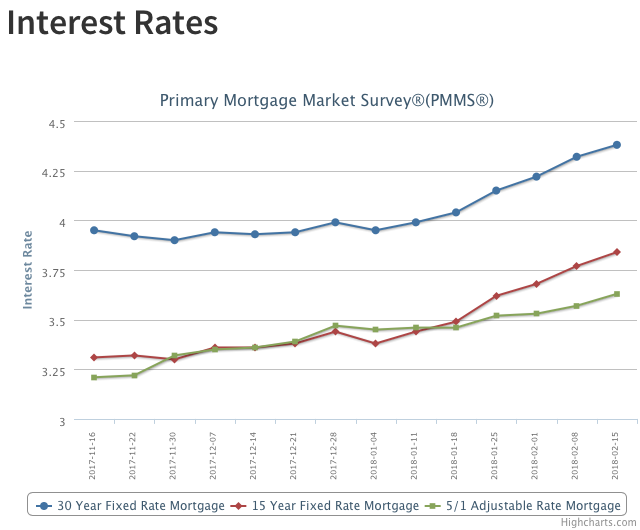
Wednesday’s Consumer Price Index report showed higher-than-expected inflation; headline consumer price inflation was 2.1 percent year-over-year in January two tenths of a percentage point higher than the consensus forecast. Inflation measures were broad-based, cementing expectations that the Federal Reserve will go forward with monetary tightening later this year. Following this news, the 10-year Treasury reached its highest level since January 2014, climbing above 2.90 percent. Mortgage rates have also surged. After jumping 10 basis points last week, the 30-year fixed-rate mortgage rose 6 basis points to 4.38 percent, its highest level since April 2014.

